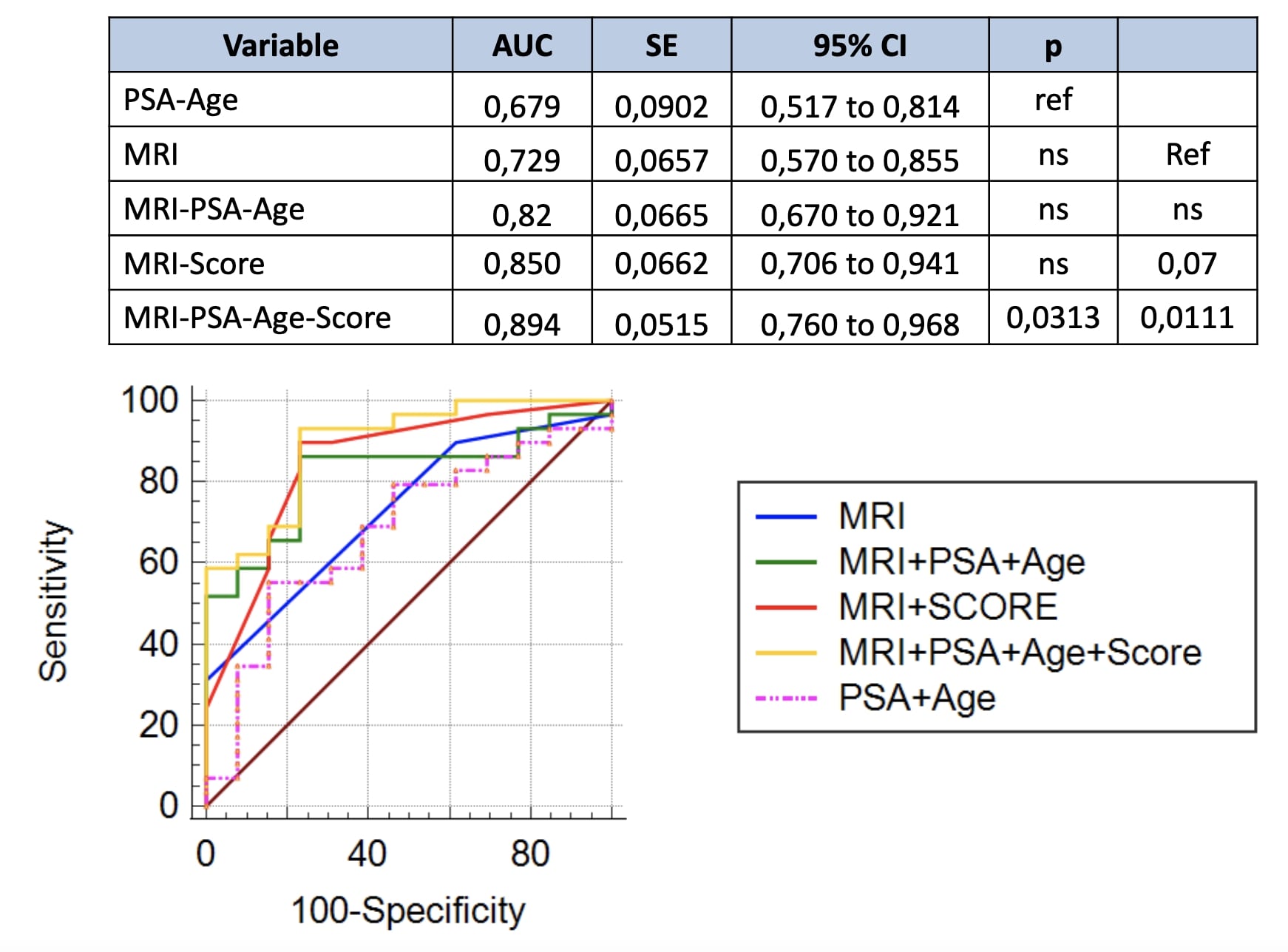Back
Poster, Podium & Video Sessions
Moderated Poster
MP58: Prostate Cancer: Detection & Screening VII
MP58-05: Urinary smart test for early detection of prostate cancer
Monday, May 16, 2022
1:00 PM – 2:15 PM
Location: Room 228
Sergio Occhipinti, Turin, Italy, Daniele Amparore, Stefano Granato, Enrico Checcucci, Federico Piramide, Sabrina De Cillis, Alberto Piana, Gabriele Volpi, Paolo Verri, Michele Sica, Stefano Piscitello, Beatrice Carbonaro, Mariano Burgio, Juliette Meziere, Edoardo Cisero, Edoardo Dibilio, Giovanni Busacca, Matteo Manfredi, Cristian Fiori, Francesco Porpiglia*, Orbassano (Turin), Italy

Francesco Porpiglia, MD
Full Professor of Urology
University of Turin
Poster Presenter(s)
Introduction: Elevated PSA levels in blood tests are the gold standard for early prostate cancer detection, but the paradox is that it has long been known that advanced prostate cancers can loose PSA expression. We have observed that in the presence of tumors, the prostate looses the capacity to produce and secrete typical molecules, such as PSA and Zinc. The current study was designed to explore the possibility to develop a rapid urinary test to improve the detection of men at real risk of prostate cancer.
Methods: After prostatic massage urinary sample were collected, with informed consent, from 66 subjects that received indication for prostatic biopsies based on PSA levels, suspicious DRE examination or mpMRI evaluation. The amount of urinary PSA and Zinc was determined by an optimize lateral flow immunoassay and colorimetric dip-stick assay, respectively.
Results: Evaluation of biopsies showed the presence of localized neoplastic cells in 40 subjects (called hereafter CP), whereas remaining 26 subjects were free from disease (healthy subjects, HS). CP were stratified based on D’Amico criteria: 8 with low risk, 25 intermediate risk, 7 high risk prostatic tumors. First, we identified the optimal cutoff for both urinary PSA and Zinc the maximize the discrimination between CP and HS in term of sensitivity and specificity. Secondly, we design a Urine Score (uScore) scale based on the positivity of urinary biomarkers: 2 (both markers positive), 1 (only one marker positive), 0 (both markers negative). ROC curve analysis showed an higher capability in discriminating CP from HS of uScore compared to serum PSA (AUC 0.737 vs 0.524, p=0.029).
Multivariate ROC curve analysis combining uScore with routine parameters such as PSA and Age and PiRADS obtained by mpMRI resulted in an AUC=0.894, that is statistically different from PSA+Age or PiRADS alone (p=0.03 and p=0.01, respectively). See Figure 1.
Conclusions: These results suggest that urinary PSA and Zinc analysis could be clinically useful in detecting neoplastic transformation in the prostate and spare useless invasive analysis to healthy subjects. Rapid tests for urinary biomarkers could be an interesting approach to improve the diagnostic path of prostate cancer.
Source of Funding: none

Methods: After prostatic massage urinary sample were collected, with informed consent, from 66 subjects that received indication for prostatic biopsies based on PSA levels, suspicious DRE examination or mpMRI evaluation. The amount of urinary PSA and Zinc was determined by an optimize lateral flow immunoassay and colorimetric dip-stick assay, respectively.
Results: Evaluation of biopsies showed the presence of localized neoplastic cells in 40 subjects (called hereafter CP), whereas remaining 26 subjects were free from disease (healthy subjects, HS). CP were stratified based on D’Amico criteria: 8 with low risk, 25 intermediate risk, 7 high risk prostatic tumors. First, we identified the optimal cutoff for both urinary PSA and Zinc the maximize the discrimination between CP and HS in term of sensitivity and specificity. Secondly, we design a Urine Score (uScore) scale based on the positivity of urinary biomarkers: 2 (both markers positive), 1 (only one marker positive), 0 (both markers negative). ROC curve analysis showed an higher capability in discriminating CP from HS of uScore compared to serum PSA (AUC 0.737 vs 0.524, p=0.029).
Multivariate ROC curve analysis combining uScore with routine parameters such as PSA and Age and PiRADS obtained by mpMRI resulted in an AUC=0.894, that is statistically different from PSA+Age or PiRADS alone (p=0.03 and p=0.01, respectively). See Figure 1.
Conclusions: These results suggest that urinary PSA and Zinc analysis could be clinically useful in detecting neoplastic transformation in the prostate and spare useless invasive analysis to healthy subjects. Rapid tests for urinary biomarkers could be an interesting approach to improve the diagnostic path of prostate cancer.
Source of Funding: none


.jpg)
.jpg)